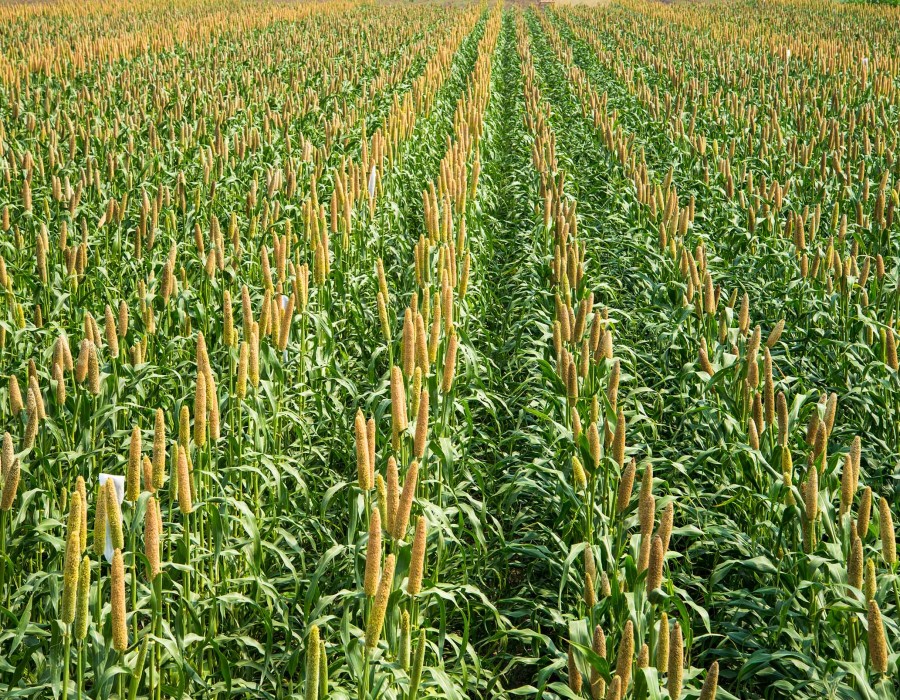Although it has long been a staple in many rural communities, the modern shift toward healthier and millet more sustainable foods has renewed interest in this remarkable crop. Understanding who benefits most from pearl millet requires exploring not only its nutrition but also its agricultural advantages, economic potential, and cultural significance. This article explains why pearl millet is important for different groups of people and why it holds a promising future in sustainable food systems.
Nutritional Powerhouse for Health-Conscious Individuals
People seeking nutrient-rich and wholesome food can greatly benefit from including pearl millet in their diet. Pearl millet is known for its high protein content, making it valuable for individuals who are looking for plant-based alternatives to support muscle development and overall strength. Its richness in dietary fiber improves digestion, supports gut health, and helps maintain stable blood sugar levels. This makes pearl millet a smart choice for those managing diabetes or trying to avoid blood sugar spikes. Additionally, it contains essential minerals such as iron, magnesium, phosphorus, and zinc, which play crucial roles in maintaining strong immunity, healthy bones, and balanced energy levels.
Health-conscious individuals also benefit from its antioxidant properties, which help combat inflammation and reduce the risk of chronic diseases. The grain's naturally gluten-free nature makes it ideal for people with gluten intolerance or celiac disease who need safe and nutritious alternatives to wheat. With increasing interest in whole grains and clean eating, pearl millet stands out as a versatile and nutrient-dense option that supports long-term wellness.
A Lifeline for Farmers in Arid and Semi-Arid Regions
Farmers living in regions affected by extreme heat, low rainfall, and poor soil fertility find pearl millet to be a crucial crop for survival and livelihood. Unlike many other grains, pearl millet thrives in difficult climates and can grow where many other crops fail. Its deep root system enables it to withstand drought, and its natural hardiness allows it to resist pests better than sensitive grains like wheat or maize. This resilience helps farmers secure stable harvests even under unpredictable weather conditions.
The low input requirements of pearl millet make it economically accessible for small-scale farmers who may not be able to afford expensive fertilizers or irrigation systems. Because the crop reaches maturity quickly, it allows for multiple harvests in a year, giving farmers more opportunities to generate income. As climate change intensifies, more farmers around the world are turning to pearl millet as a climate-smart solution that ensures food security and supports sustainable agriculture.
A Strong Source of Food Security for Vulnerable Communities
Communities in developing regions, where food scarcity is a serious challenge, benefit greatly from pearl millet’s reliability and nutritional value. Its ability to grow in harsh environments means it can provide a stable food supply even in years when other crops fail due to drought or extreme temperatures. For families who rely on subsistence farming, this grain can be the difference between hunger and survival.
Pearl millet flour is used to prepare many traditional foods such as flatbreads, porridges, and beverages. These foods are not only culturally important but also essential for daily nutrition. In many regions, children and pregnant women benefit significantly from pearl millet because it offers vital nutrients needed for proper growth and development. Its affordability and availability make it a practical solution for improving community nutrition and reducing dependence on expensive imported grains.
A Smart Choice for Environmentally Conscious Consumers
Individuals who are committed to sustainability and eco-friendly choices also benefit from pearl millet. Since the crop requires significantly less water than rice or wheat, choosing foods made from pearl millet helps reduce water consumption in agriculture. It also has a smaller carbon footprint because it grows well without heavy chemical inputs. As the global food industry seeks greener solutions, pearl millet stands out as a crop that supports environmental conservation while still providing high nutritional value.
Choosing pearl millet-based products encourages farmers to cultivate more climate-resilient crops, promoting a more sustainable agricultural ecosystem. Conscious consumers play a vital role in supporting grains that are good for both the planet and human health.
Rising Opportunities for Food Entrepreneurs
Food manufacturers and entrepreneurs who want to innovate in the health food market can also benefit from the growing popularity of pearl millet. With rising demand for gluten-free and nutrient-rich products, there is a vast opportunity to introduce millet-based snacks, breakfast cereals, baked goods, and beverages. Many companies are now experimenting with millet pasta, millet cookies, and millet energy bars, appealing to modern consumers who prefer wholesome and minimally processed foods.
The increasing global interest in traditional grains opens doors for new food products that blend ancient nutrition with modern tastes. Entrepreneurs who invest in pearl millet-based innovations not only tap into a profitable market but also contribute to a healthier and more sustainable food system.
Conclusion
pearl millet is more than just an ancient grain; it is a powerful resource that benefits a wide variety of people. From health-conscious individuals and climate-challenged farmers to vulnerable communities, eco-friendly consumers, and food entrepreneurs, pearl millet offers value on many levels. Its exceptional nutritional profile, agricultural resilience, and economic potential make it one of the most important grains for the future. As the world seeks healthier diets and sustainable food solutions, pearl millet stands ready to play a central role in global nourishment and environmental preservation.





Comments